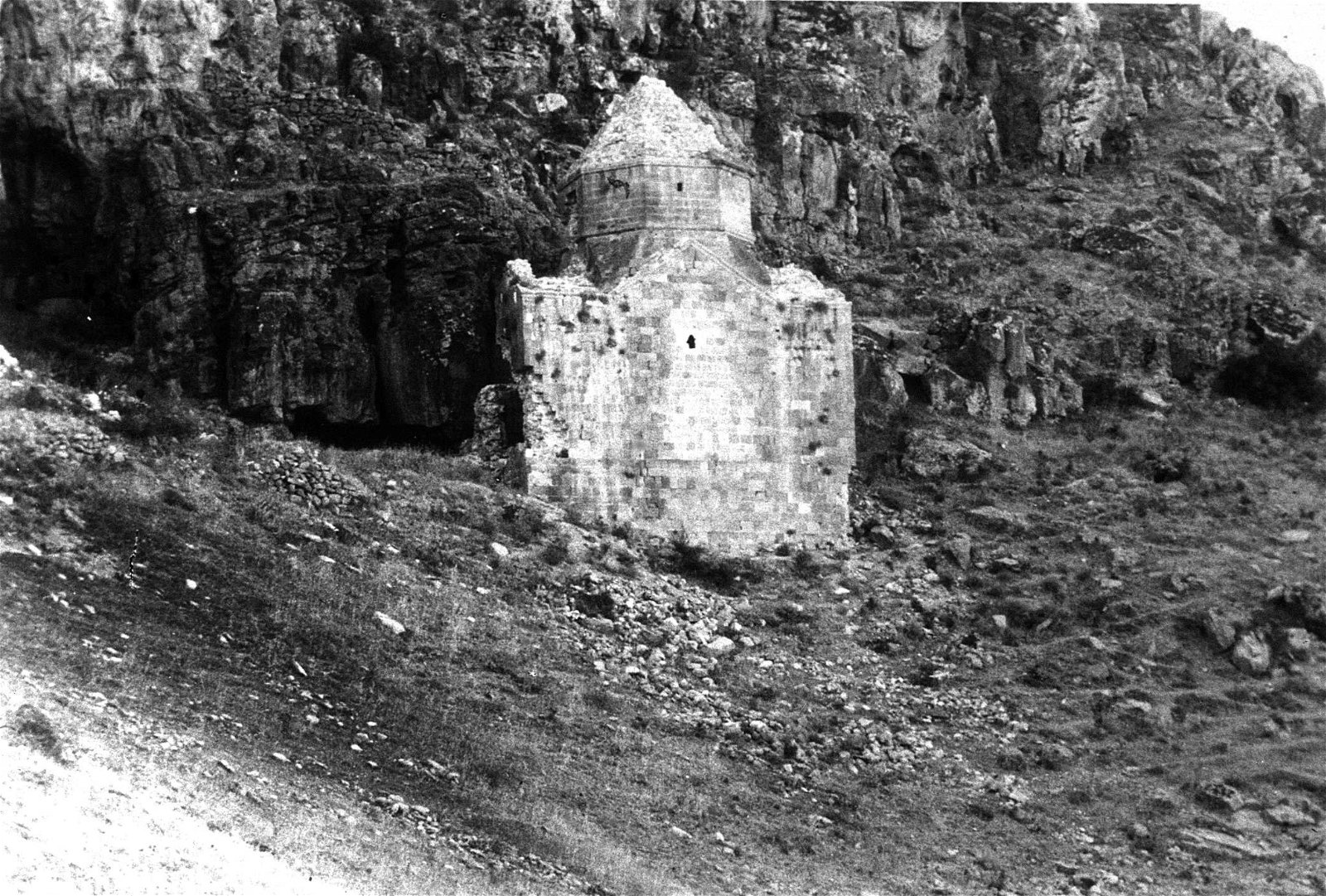In May 2014, I was traveling from Van to Kars with my wife and a group of close friends. Not long after passing the northeast-most corner of Lake Van, I was looking up at the countryside when a structure along the mountain ridge caught my eye, and I had our driver stop. There was no access for our vehicle, and the structure was too far in the distance to walk, but I grabbed my most powerful camera lens and took some photographs of what was obviously a church.

With a bit of research, I was able to determine that the church was known as Sourp Sdepanos, located in the region of Pergri or Berkri, which is now known as Muradiye. The church was dedicated to the son of the priest, Der Housgan.

The Research on Armenian Architecture collection by Rensselaer Polytechnic Institute details an interesting legend surrounding the church. It is said that the wife of Der Housgan was kidnapped by Tatar soldiers and sold to a Christian woman in Tabriz. This woman agreed to release Der Housgan’s wife if a son was born to the couple and committed to the priesthood. “The son that was born, whom they named Sdepanos, did indeed display saintly ways and powers, and a great passion for helping the poor.” Der Sdepanos is considered to have died at the end of the 13th century, and the church was built in his honor.
It is believed that the original church was destroyed by the 17th century. The current church was built sometime during the same century through the efforts of Pilibos I, Catholicos of Aghtamar.
Various Turkish media outlets recently reported on a new road being constructed by the Muradiye municipality to improve access to the Sourp Sdepanos church. The primary objective is to encourage tourism. It is claimed that the Museum in Van has initiated research on the church and that Mehmet Top, a faculty member at Van Yüzüncü Yıl Üniversitesi, has been investigating the church over a number of years. While acknowledging the role “man” has played in the destruction of the church, equal attribution is given to natural conditions.
Anyone who has traveled over a period of time in the region of Van, and elsewhere in Turkey, can well imagine the role looters and treasure seekers have played in the years since the Genocide, prior to which the Armenians constituted at least two-thirds of the population in the region of Pergri.
Just as significant are the ruins of an even older Armenian monastery of Arkelan on the cliffs above Sourp Sdepanos. The monastic complex included the church of Sourp Asdvadzadzin and dates to a much earlier period, most probably prior to the 11th century. The monastery was famous as a scriptorium, producing important manuscripts into the 17th century. We can see that the monastery is largely in ruins from satellite imagery, yet there still are remnants. J. M. Thierry, in his volume on the Armenian monuments of Vasbouragan, details the Armenian inscriptions at both sites and includes numerous photographs.
It remains to be seen if the increased accessibility to the church ruins will decrease or increase the likelihood of further vandalism. As we see even today, the security of both Armenians and our cultural heritage cannot be taken for granted.


Another incredible vestige of our civilization. Remarkable history. So much to learn, appreciate and protect. Our ancestor continue to amaze me with their resilience. Great lesson for us. Thank you George.
Thank you, George, thank you very much for posting these wonderful photos. And thank you for all the important work you do for the Cause.
I remember well the excitement of that day when George spotted the church in the distance. This is yet another example of a church that had been lost to our culture since 1915, but that has been rediscovered thanks to people such as George Aghjayan.
Postscript. In 2021 the monastery’s medieval cemetery, containing elaborate “proper” khachkars over 2m tall, was destroyed (all khachkars removed and the site leveled and covered with earth). To reach it, the destroyers – probably Turkish paramilitary forces (gendarmerie) – had to cut a roadway up a hillside. This is probably the “access road” mentioned in those Turkish sources, and was a cover story for the actual purpose of the road. As of June 2023 there is no access road to the church. The destroyed cemetery, located on a ridge to the south of the lower church, is not reported in any published source on the site.